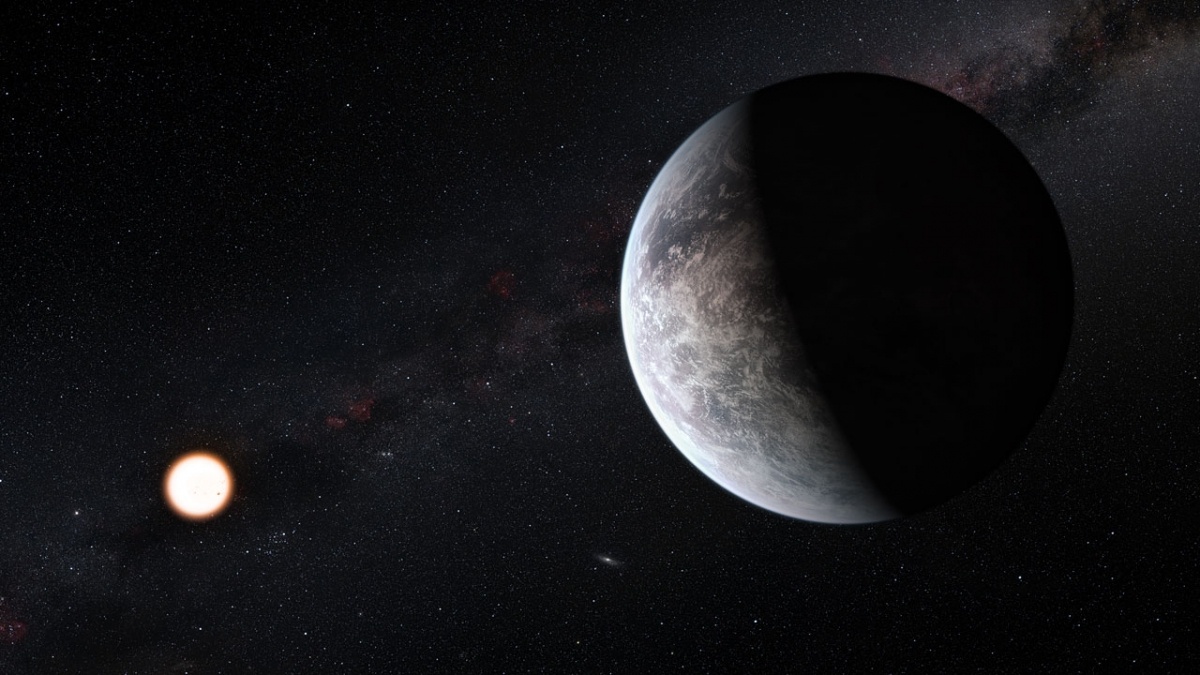It is no exaggeration to say that the study of extrasolar planets has exploded in recent decades. To date, 4,375 exoplanets have been confirmed in 3,247 systems, with another 5,856 candidates awaiting confirmation. In recent years, exoplanet studies have started to transition from the process of discovery to one of characterization. This process is expected to accelerate once next-generation telescopes become operational.
As a result, astrobiologists are working to create comprehensive lists of potential “biosignatures,” which refers to chemical compounds and processes that are associated with life (oxygen, carbon dioxide, water, etc.) But according to new research by a team from the Massachusetts Institute of Technology (MIT), another potential biosignature we should be on the lookout for is a hydrocarbon called isoprene (C5H8).
The study that describes their findings, “Assessment of Isoprene as a Possible Biosignature Gas in Exoplanets with Anoxic Atmospheres,” recently appeared online and has been accepted for publication by the journal Astrobiology. For the sake of their study, the MIT team looked at the growing list of possible biosignatures that astronomers will be on the lookout for in the coming years.

To date, the vast majority of exoplanets have been detected and confirmed using indirect methods. For the most part, astronomers have relied on the Transit Method (Transit Photometry) and the Radial Velocity Method (Doppler Spectroscopy), alone or in combination. Only a few have been detectable using Direct Imaging, which makes it very difficult to characterize exoplanet atmospheres and surfaces.
Only on rare occasions have astronomers been able to obtain spectra that allowed them to determine the chemical composition of that planet’s atmosphere. This was either the result of light passing through an exoplanet’s atmosphere as it transitted in front of its star or in the few cases where Direct Imaging occurred and light reflected from the exoplanet’s atmosphere could be studied.
Much of this has had to do with the limits of our current telescopes, which do not have the necessary resolution to observe smaller, rocky planets that orbit closer to their star. Astronomers and astrobiologists believe that it is these planets that are most likely to be potentially habitable, but any light reflected from their surfaces and atmospheres is overpowered by the light coming from their stars.
However, that will change soon as next-generation instruments like the James Webb Space Telescope (JWST) takes to space. Sara Seager, the Class of 1941 Professor of Physics and Planetary Sciences at MIT, leads the research group responsible (aka. the Seager Group) and was a co-author on the paper. As she told Universe Today via email:
“With the upcoming October 2021 launch of the James Webb Space Telescope we will have our first capability of searching for biosignature gases—but it will be tough because the atmospheric signals of small rocky planet are so weak to begin with. With the JWST on the horizon the number of people working in the field has grown tremendously. Studies such as this one coming up with new potential biosignature gases, and other work showing potential false positives even for gases such as oxygen.”

Once it is deployed and operational, the JWST will be able to observe our Universe at longer wavelengths (in the near- and mid-infrared range) and with greatly improved sensitivity. The telescope will also rely on a series of spectrographs to obtain composition data, as well as coronagraphs to block out the obscuring light of parent stars. This technology will enable astronomers to characterize the atmospheres of smaller rocky planets.
In turn, this data will allow scientists to place much tighter constraints on an exoplanet’s habitability and could even lead to the detection of known (and/or potential) biosignatures. As noted, these “biosignatures” include the chemical indications associated with life and biological process, not to mention the types of conditions that are favorable to it.
These include oxygen gas (O2), which is essential to most forms of life on Earth and is produced by photosynthetic organisms (plants, trees, cyanobacteria, etc.). These same organisms metabolize carbon dioxide (CO2), which oxygen-metabolizing life emits as a waste product. There’s also water (H2O), which is essential to all life as we know it, and methane (CH4), which is emitted by decaying organic matter.
Since volcanic activity is believed to play an important role in planetary habitability, the chemical byproducts associated with volcanism – hydrogen sulfide (H2S), sulfur dioxide (SO2), carbon monoxide (CO), hydrogen gas (H2), etc. – are also considered biosignatures. To this list, Zhan, Seager, and their colleagues wished to add another possible biosignature – isoprene. As Zhan explained to Universe Today via email:
“Our research group at MIT focuses on using a holistic approach to explore all possible gases as potential biosignature gas. Our prior work led to the creation of the all small molecules database. We proceed to filter the ASM database to identify the most plausible biosignature gas candidates, one of which is isoprene, using machine learning and data-driven approaches – Dr. Zhuchang Zhan.”

Like its cousin methane, isoprene is an organic hydrocarbon molecule that is produced as a secondary metabolite by various species here on Earth. In addition to deciduous trees, isoprene is also produced by a diverse array of evolutionary-distant organisms – such as bacteria, plants, and animals. As Seager explained, this makes it promising as a potential biosignature:
“Isoprene is promising because it is produced in vast qualities by life on Earth—as much as methane production! Furthermore, a huge variety of life forms (from bacteria to plants and animals), those that are evolutionary distant from each other, produce isoprene, suggesting it might be some kind of key building block that life elsewhere might also make.”
While isoprene is about as abundant as methane here on Earth, isoprene is destroyed by interaction with oxygen and oxygen-containing radicals. For this reason, Zhang, Seager, and their team chose to focus on anoxic atmospheres. These are environments that are predominantly composed of H2, CO2, and nitrogen gas (N2), which is similar to what Earth’s primordial atmosphere was composed of.
According to their findings, a primordial planet (where life is beginning to emerge) would have abundant isoprene in its atmosphere. This would have been the case on Earth between 4 and 2.5 billion years ago when single-celled organisms were the only life and photosynthetic cyanobacteria were slowly converting Earth’s atmosphere into one that was oxygen-rich.
By 2.5 billion years ago, this culminated in the “Great Oxygenation Event” (GOE), which proved toxic to many organisms (and metabolites like isoprene). It was also during this time that complex lifeforms (eukaryotes and multi-celled organisms) began to emerge. In this respect, isoprene could be used to characterize planets that are in the midst of a major evolutionary shift and laying the groundwork for future animal phyla.
But as Zhang noted, teasing out this potential biosignature will be a challenge, even for the JWST:
“The caveats with isoprene as a biomarker are that: 1. 10x-100x the Earth’s Isoprene production rate is needed for detection; 2. Detecting Near-Infrared isoprene spectral feature can be hindered by the presence of methane or other hydrocarbons. Unique detection of isoprene will be challenging with JWST, as many hydrocarbon molecules share similar spectra features in Near-Infrared wavelengths. But future telescopes that focus on the mid-IR wavelength will be able to detect isoprene spectral features uniquely.”
Beyond the JWST, the Nancy Grace Roman Space Telescope (successor to the Hubble mission) will also be taking to space by 2025. This observatory will have the power of “One-Hundred Hubbles” and its recently-upgraded infrared filters will allow it to characterize exoplanets on its own and through collaborations with the JWST and other “great observatories.”
There are also several ground-based telescopes currently being built here on Earth that will rely on sophisticated spectrometers, coronographs, and adaptive optics (AOs). These include the Extremely Large Telescope (ELT), the Giant Magellan Telescope (GMT), the Thirty Meter Telescope (TMT) These telescopes will also be able to conduct Direct Imaging studies of exoplanets, and the results are expected to be ground-breaking.

Between improved instruments, rapidly improving data analysis and techniques, and improvements in our methodology, the study of exoplanets is only expected to accelerate further. In addition to having tens of thousands of more available for study (many of which will be rocky and “Earth-like”), the unprecedented views we will have of them will let us see just how many habitable worlds are out there.
Whether or not this will result in the discovery of extraterrestrial life within our lifetimes remains to be seen. But one thing is clear. In the coming years, when astronomers start combing through all the new data they will have on exoplanet atmospheres, they will have a comprehensive list of biosignatures to guide them.
Seager and Zhan’s previous work include a concept for a Martian greenhouse that could provide all the necessary food for a crew of four astronauts for up to two years. This greenhouse, known as the Biosphere Engineered Architecture for Viable Extraterrestrial Residence (BEAVER), took second place in the 2019 NASA BIG Idea Challenge. You can read more about it here.
Further Reading: arXiv

